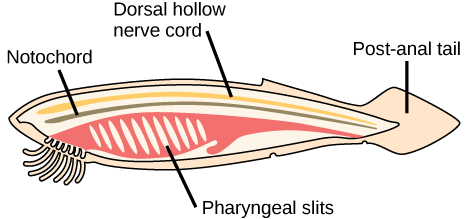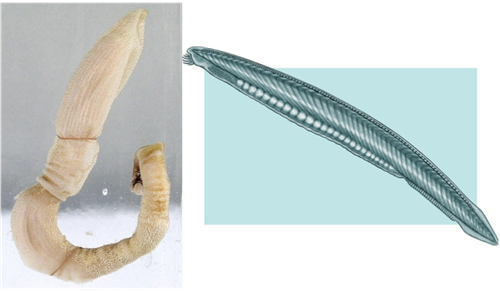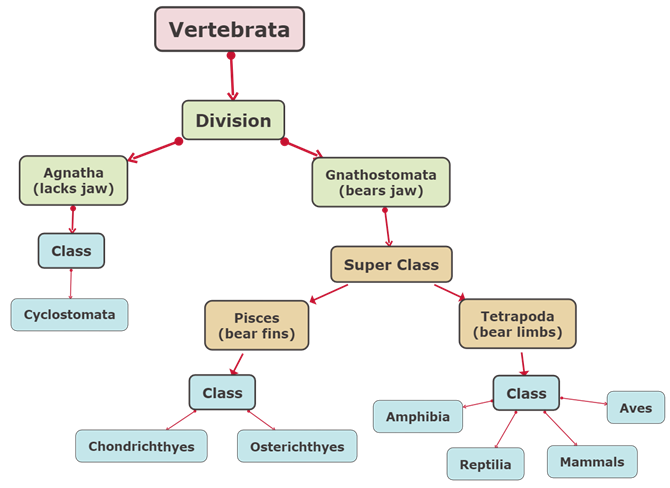PDF chapter test TRY NOW
Chordata and their characteristics:
- The animals of this phylum have a rod-shaped structure known as a notochord that provides skeletal support to the body. It is seen during the embryonic stages for most chordates and adult stages for some chordates.
- They have a nerve cord that connects the brain.
- The aquatic animals have a structure known as the pharyngeal slit that allows the exit of water.
- These animals also have a post-anal tail which helps in balancing. They are made up of muscles and skeletal structures.

Characteristics of chordates
The phylum chordata is divided into subphylum's such as Protochordata (an informal group of invertebrates within chordates), Vertebrata, Urochordate and Cephalochordata.
Sub-phylum protochordata
These are an informal group of invertebrates which are marine mammals placed within the phylum chordates. These animals are bilaterally symmetrical and triploblastic. They are coelomates and lack segmentation. They have definite organs. In addition, they have a notochord. But, this structure is not present at all stages in their lives.

Protochordata
Sub-phylum vertebrata
These are organisms that have an organ-system level of organisation. They have highly developed tissues and are triploblastic. These organisms are bilaterally symmetrical and show segmentation. They have a well-defined coelom.

Classification of vertebrates
Chordate characteristics:
- They have a vertebral column developed from the notochord.
- They have a dorsal nerve cord.
- They have paired gill pouches.
- The internal skeleton muscles can attach at various points of the body.
These vertebrates are classified into six classes. They are as follows:
- Cyclostomata
- Pisces or fishes
- Amphibia
- Reptilia
- Aves or birds
- Mammalia
These animals can be divided into cold-blooded and warm-blooded animals.
Cold-blooded: The animals which keep their internal body temperature constant are known as cold-blooded animals.
Warm-blooded animals: The animals in which the body temperature varies with the variation in the environment are known as warm-blooded animals. The fishes, reptiles, insects, amphibians are cold-blooded animals, and the mammals and birds are warm-blooded animals.
Reference:
https://upload.wikimedia.org/wikipedia/commons/thumb/9/90/Eichelwurm_%28cropped%29.jpg/512px-Eichelwurm_%28cropped%29.jpg
https://commons.wikimedia.org/wiki/File:Amphioxus.png
https://upload.wikimedia.org/wikipedia/commons/f/f0/Chordate_features.png
